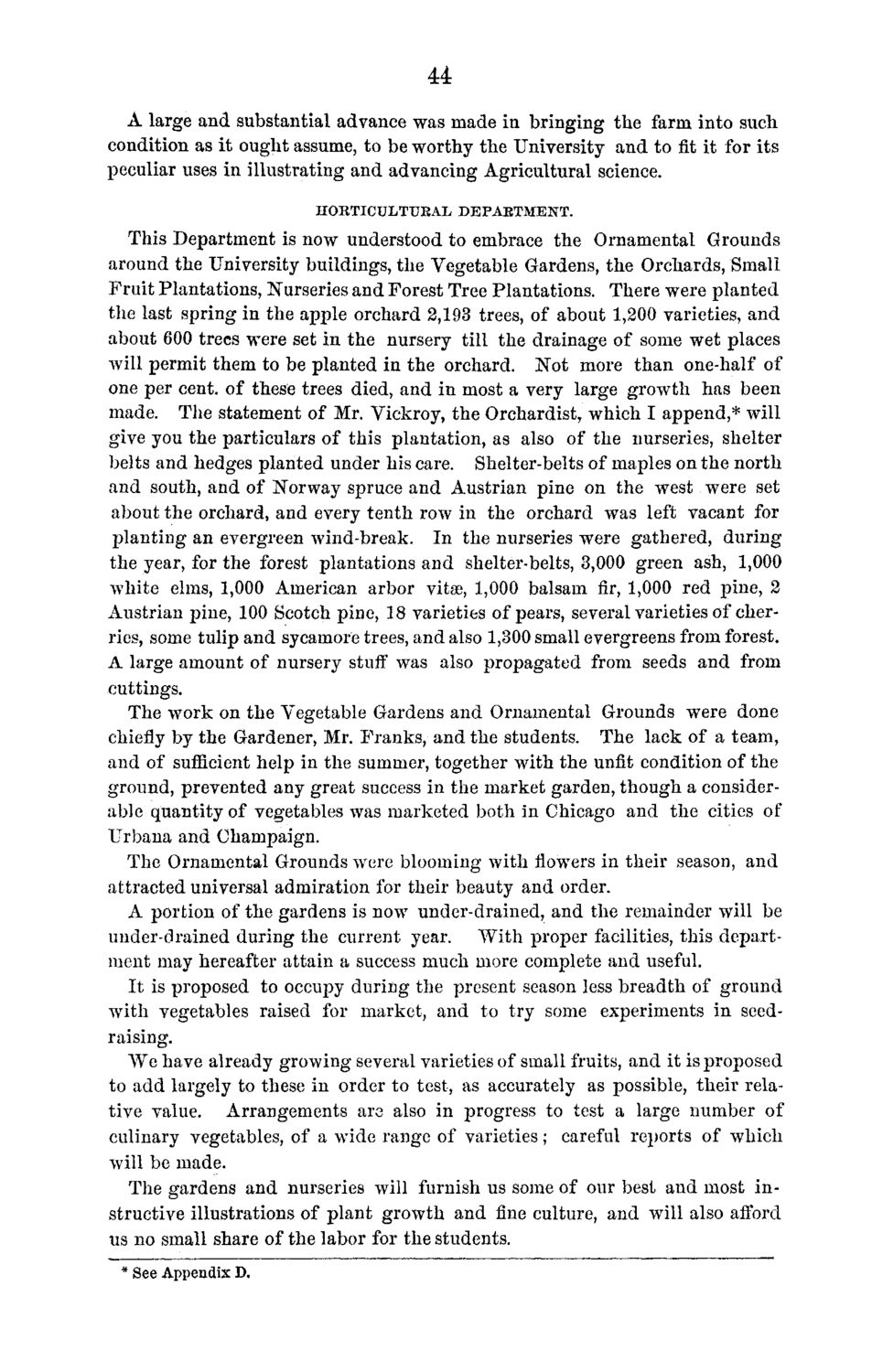| |
| |
Caption: Board of Trustees Minutes - 1870
This is a reduced-resolution page image for fast online browsing.

EXTRACTED TEXT FROM PAGE:
44 A large and substantial advance was made in bringing the farm into such condition as it ought assume, to be worthy the University and to fit it for its peculiar uses in illustrating and advancing Agricultural science. HORTICULTURAL DEPARTMENT. This Department is now understood to embrace the Ornamental Grounds around the University buildings, the Vegetable Gardens, the Orchards, Small Fruit Plantations, Nurseries and Forest Tree Plantations. There were planted the last spring in the apple orchard 2,193 trees, of about 1,200 varieties, and about 600 trees were set in the nursery till the drainage of some wet places will permit them to be planted in the orchard. Not more than one-half of one per cent, of these trees died, and in most a very large growth has been made. The statement of Mr. Yickroy, the Orchardist, which I append,* will give you the particulars of this plantation, as also of the nurseries, shelter belts and hedges planted under his care. Shelter-belts of maples on the north and south, and of Norway spruce and Austrian pine on the west were set about the orchard, and every tenth row in the orchard was left vacant for planting an evergreen wind-break. In the nurseries were gathered, during the year, for the forest plantations and shelter-belts, 3,000 green ash, 1,000 white elms, 1,000 American arbor vitae, 1,000 balsam fir, 1,000 red pine, 2 Austrian pine, 100 Scotch pine, 18 varieties of pears, several varieties of cherries, some tulip and sycamore trees, and also 1,300 small evergreens from forest. A large amount of nursery stuff was also propagated from seeds and from cuttings. The work on the Vegetable Gardens and Ornamental Grounds were done chiefly by the Gardener, Mr. Franks, and the students. The lack of a team, and of sufficient help in the summer, together with the unfit condition of the ground, prevented any great success in the market garden, though a considerable quantity of vegetables was marketed both in Chicago and the cities of Urbana and Champaign. The Ornamental Grounds were blooming with flowers in their season, and attracted universal admiration for their beauty and order. A portion of the gardens is now under-drained, and the remainder will be under-drained during the current year. With proper facilities, this department may hereafter attain a success much more complete and useful. It is proposed to occupy during the present season less breadth of ground with vegetables raised for market, and to try some experiments in seedraising. We have already growing several varieties of small fruits, and it is proposed to add largely to these in order to test, as accurately as possible, their relative value. Arrangements are also in progress to test a large number of culinary vegetables, of a wide range of varieties; careful reports of which will be made. The gardens and nurseries will furnish us some of our best and most instructive illustrations of plant growth and fine culture, and will also afford us no small share of the labor for the students. * See Appendix D,
| |